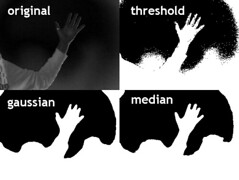I keep coming back to this issue (previously: Defining Music). Which is fitting, considering it's a large part of my thesis. I explained the basic idea to a friend recently in a way that seemed clear, so I'd like to preserve that clarity in text.
Before Ethnomusicology, western culture believed music to be universal amongst civilized peoples. Ethnomusicology helped people see that music was more local and less global. Around the same time, Cage encouraged people to hear things for themselves as music: saying that it is extremely local, to the point of being defined by an individual.
I would like to propose a reversal to Cage's position (or, at least, his language). I believe music is built out of correspondences between sounds and other things. Over time, these "other things" have been comprised of innate human impulses, society-specific tradition, and individual preference, in that order. I would like to add "everything else" to that category of "other things". This means that music exists without humans, as sounds always have context. Individuals do not decide what is music (this is the reversal), we can only decide what is noise. We do this by identifying acontextual sounds — and the context we use for understanding sounds is continually changing. Wind chimes ringing during a cool autumn walk have a different context to us than they do when we're trying to study next to them, or trying to hear past them.
As context-creators, of the general category of conscious non-omniscient beings, we define music only insomuch as we misunderstand some of it as noise.









